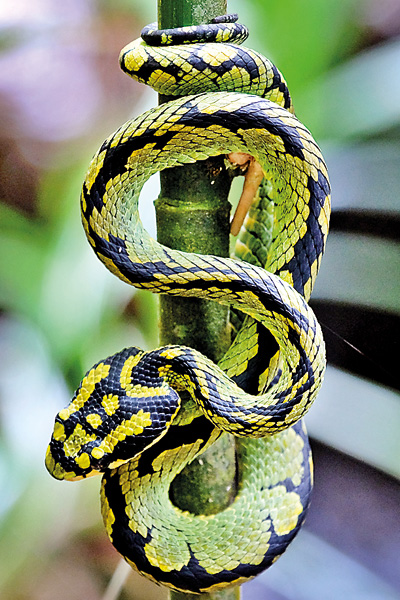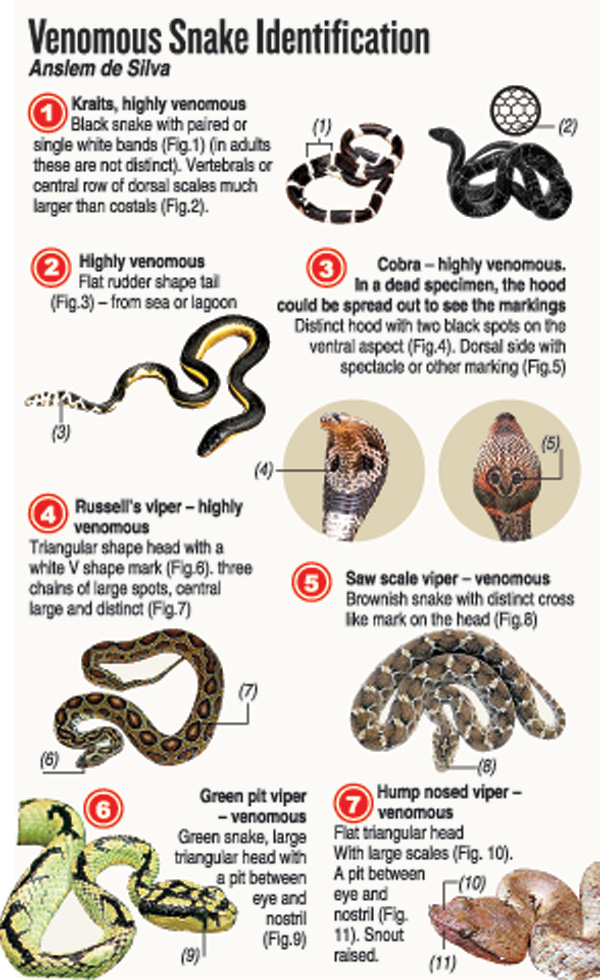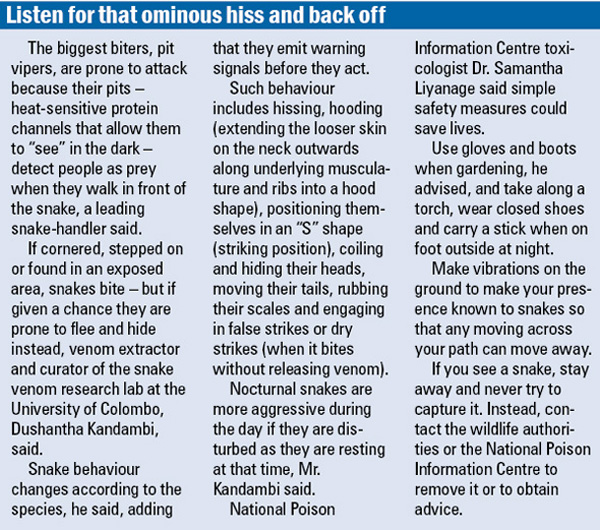News
Heat is driving snakes into homes, experts warn
Arid weather conditions are driving snakes towards human settlements in search of water and shade, prompting health authorities to warn the public to take precautions.

Green Pit viper. Pic by Amila Gamage
“Snakes become very active and prone to biting people when the climate warms up as heat regulates their body temperature,” the National Poison Information Centre’s (NPIC) Toxicologist Dr. Samantha Liyanage said.
He said people living in the North Central, Eastern and Southern provinces are at greater risk of snake bites as most snakes are found in those areas.
He explained that people should keep their houses clear of debris and crevices as the snakes, along with their prey such as rats, mice and house geckos, can take refuge in homes during the heat of the day.
Dr. Liyanage pointed out that although snakebite fatalities had decreased because of improved treatment, the number of hospital admissions due to snakebite remain high.
NPIC figures show 75-100 deaths occur every year while 35,000-40,000 cases are reported annually.
Dr. Liyanage explained that most snakes in Sri Lanka possess either hemotoxins or neurotoxins, so a victim might suffer swelling, compartment syndrome (a painful condition that occurs when pressure within the muscles builds to dangerous levels), nausea, vomiting, loss of balance, neurological complications, respiratory complications and bleeding in internal organs. There are secondary complications such as kidney failure and tissue necrosis.
The Russell’s viper accounts for most deaths, Dr Liyanage said. Unlike cobra venom, which only has neurotoxin, the Russell’s viper has both hemotoxin and heurotoxins.
“Most local hospitals are provided with anti-venom, which is imported from India. Anti-venom for cobra, Russell’s viper and krate bites are available,” he said. 

Russell's viper and (right) extracting venom from a cobra. Pix courtesy Dushantha Kandambi
There was no anti-venom existent for the hump-nosed pit viper, Dr. Liyanage said. People who were bitten by this snake would be injected with antibiotics and symptomatic treatment and given dialysis if there were any symptoms of kidney failure.
Herpetologists and researchers point out that snakebites are generally caused by human activities, and snakes needed to be preserved as they contributed to the ecosystem in many ways.
Even snake venom was an asset as it is used to create drugs used in western medicine.
Well-known herpetologist Dr. Anslem de Silva said Sri Lanka had many species of land, freshwater and sea snakes; about 105 species have been recorded and new species were still being discovered.
Dr. de Silva said six species of land snakes are considered highly venomous as they are known to have caused human fatalities. They are: Cobra (Naja naja), Common krait (Bungarus caeruleus), Sri Lankan krait (Bungarus ceylonicus), Russell’s viper (Daboia russelii),Merrem’s hump-nosed pit-viper (Hypnale hypnale),Lowland hump-nosed pit-viper (Hypnale zara).
“The most number of deaths are due to the bite of the Russell’s viper, which accounts for around 40 per cent of all venomous snakebites,” Dr. de Silva said. “The species responsible for most bites, however, is the Merrem’s hump-nosed pit-viper.”
He said bites by the common krait (Bungarus caeruleus) and Sri Lankan krait (Bungarus ceylonicus) occur mainly inside houses, usually occurring while victims were asleep.
Mr. de Silva said snakes make their presence known by raising their hoods or hissing, and the Russell’s viper was the loudest hisser in Sri Lanka.

The Krait




